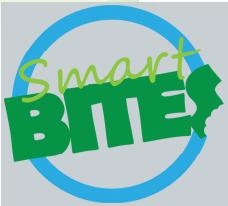Kentucky Youth Bite into Smarter Foods

April 10, 2009
Fried chicken is getting a more critical look in Bowling Green, Kentucky, where students are taking advantage of a unique adaptation of the “Go, Slow, and Whoa” concept, used by the We Can!™ program. The concept teaches youth and parents about better nutrition by providing examples of what types of foods fall into the “Go” (eat often), “Slow” (eat occasionally), and “Whoa” (eat rarely) food categories at their favorite restaurants.
Following some revelatory research about how often middle and high school students eat out—approximately 60% eat out at least five times per week—a team of faculty and students at Western Kentucky University (WKU) formed a collaboration with several local restaurants to encourage youth to purchase “Go” and “Slow” foods.
“The program is called Smart Bites, and was created for middle- and high-school students to encourage and reward them for making better food choices when they’re eating out,” says Dr. Marilyn Gardner, a We Can! supporter and principal investigator for the project, which is funded by the Institute of Medicine, through the Kellogg Health of the Public Fund. The Smart Bites program has many partners, including We Can! community site Barren River District Health Department (BRDHD) in Bowling Green. BRDHD director Dennis Chaney is a member of the Healthy Weight Kids Coalition that runs the Smart Bites program, and BRDHD has assisted with the administration of the grant.
The program launched in January 2009 in all of the area's public middle and high schools. Here’s how it works: students who voluntarily enrolled into the program were given a magnetized “Smart Bites”  card for use at participating restaurants. Each time a student orders a “Go” or “Slow” food item they receive a discount and get their card swiped. Each card swipe is recorded and enters the student into a monthly drawing for prizes.
card for use at participating restaurants. Each time a student orders a “Go” or “Slow” food item they receive a discount and get their card swiped. Each card swipe is recorded and enters the student into a monthly drawing for prizes.
“Once a month, we randomly select students from each school who has made a 'Go' or 'Slow' selection while eating out," says Gardner. “No matter how many times a student eats out that month, though, their card number is only entered once. This gives each card user an equal chance to win, but more importantly, it discourages students from eating out just to increase their chance of winning.” Leah Ashwill, project coordinator, added, “We want kids and families to eat at home. But when they do eat out, we want them to make healthier choices.”
Prizes include mall gift cards, fitness center and skating rink passes, and sports equipment. Several of these items were donated by local businesses and community organizations who have responded enthusiastically to the project.
How do participating students know which foods fit which categories? During the planning phase, WKU dietetic students and faculty analyzed the menus of restaurants and identified the“Go” and “Slow” foods. An educational booklet was produced and distributed to students. Menu information was also included on the project’s website: www.smartbitesbg.com. But because many decisions are made at the point of purchase, the Smart Bites program also uses counter-top and table-top displays that list menu selections that fall into We Can!'s "Go" and "Slow" categories. Said Ashwill, “We opted to focus on what students should choose instead of what they shouldn’t, so we left off the 'Whoa' foods.”
The restaurants included in the booklet and website were identified through focus groups with students. Students were also instrumental in naming the card and in selecting the visuals that depict “Go” and “Slow” foods. “Go” foods are denoted through the use of a green thumbs up and “slow” food through a yellow sideways thumb.
An added benefit of the program is that the swipe-card technology allows Gardner and her colleagues to track the amount of “Go” and “Slow” food being purchased by participating students. In the first month alone, there were more than 3,000 card swipes.





